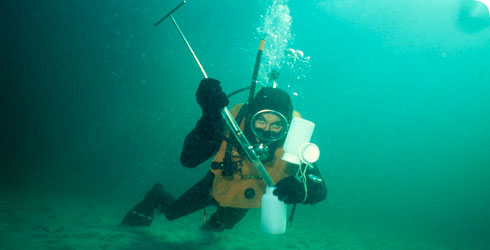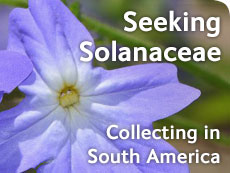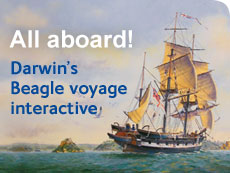Expeditions and collecting
Pioneers such as Captain Cook and Charles Darwin changed the course of science with their daring voyages. The specimens and natural history artwork that they brought back are still as remarkable and scientifically important today. Discover why Museum collections are so vital to our knowledge of the past, present and future.
-

HMS Challenger expedition
Find out about the voyage of HMS Challenger, which started the science of oceanography and proved that life existed on the deep sea bed.
-

Into the wild video diaries
From battling typhoons in Taiwan to surviving long dark nights deep in the jungle, watch videos of Museum scientists on recent expeditions and find out what life is really like out in the field.
-

Collecting in the Isles of Scilly, a UK biodiversity hotspot
Join Museum scientists on a field trip to the Isles of Scilly. Find out why this is such an interesting location in which to collect specimens and how they will support future research.
-

The voyage of the Beagle
Hop on board the HMS Beagle interactive voyage to learn about Darwin’s life-changing world trip. It was on this epic journey that he first began to think about the evolution of species.
-

Worst journey in the world
In June 1911, 3 men embarked on an epic Antarctic journey immortalised in Cherry-Garrard's book The Worst Journey in the World. Find out why.
-

Collecting meteorites in Antarctica
Interview with Sara Russell, Head of the Mineral and Planetary Sciences Division. Sara has spent three summers collecting meteorites in Antarctica. Find out what is involved.
-

Collecting and Society
Discover the value of collections to society, as well as how specimens are collected and the surrounding ethical considerations.
-

Keeping and Caring
How does the Museum organise, preserve and conserve its 60 million life science specimens?
-

Endeavour botanical illustrations
Browse the botanical drawings from onboard HMS Endeavour (1768–1771) – the first voyage devoted exclusively to scientific discovery.
-

The Endeavour voyage across the Pacific, 1768-1771
Find out about Cook’s first journey across the Pacific in search of a southern continent, and the discoveries he and his crew made.
-

Captain Cook's return to the South Seas, 1772-1775
Discover the trials and tribulations faced by Captain Cook on his second Endeavour expedition in search of a southern continent.
-

Sir Hans Sloane's voyage to Jamaica, 1687-1689
Tony Rice charts Sloane's expedition to Jamaica, a voyage that produced one of the world's most significant natural history collections.
Art, nature and imaging

Discover how natural history art and imaging techniques have developed since the 17th century and explore selected artworks from the Museum’s world-class art collections.
Toolbox
Beetle blog

Go behind the scenes with Beulah Garner, one of the curators looking after 9 million beetle specimens in the Museum collections. Discover the projects and fieldwork she and colleagues are involved in, and find out more about the fascinating world of beetles.


